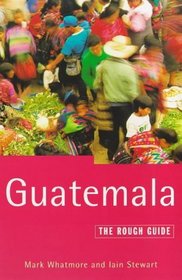Search -
The Rough Guide to Guatemala (Rough Guides)
The Rough Guide to Guatemala - Rough Guides
INTRODUCTION Spanning the narrow Central American isthmus, Guatemala is a physical and cultural microcosm of Latin America, incorporating an astonishing array of contradictions in a country roughly the size of Ireland. Uniquely, it still has a population which is at least half native American, and the strength of indigenous culture is greater h... more »
INTRODUCTION Spanning the narrow Central American isthmus, Guatemala is a physical and cultural microcosm of Latin America, incorporating an astonishing array of contradictions in a country roughly the size of Ireland. Uniquely, it still has a population which is at least half native American, and the strength of indigenous culture is greater h... more »
ISBN-13: 9781858283234
ISBN-10: 185828323X
Publication Date: 10/1/1998
Pages: 416
Rating: ?
ISBN-10: 185828323X
Publication Date: 10/1/1998
Pages: 416
Rating: ?
0 stars, based on 0 rating
Publisher: Rough Guides Limited
Book Type: Paperback
Members Wishing: 0
Reviews: Amazon | Write a Review
Book Type: Paperback
Members Wishing: 0
Reviews: Amazon | Write a Review
Genres:
- Travel >> Reference >> Guidebooks
- Travel >> Guidebook Series >> Rough Guide
- Travel >> Latin America >> Central America >> General
- Travel >> Latin America >> Central America >> Guatemala




